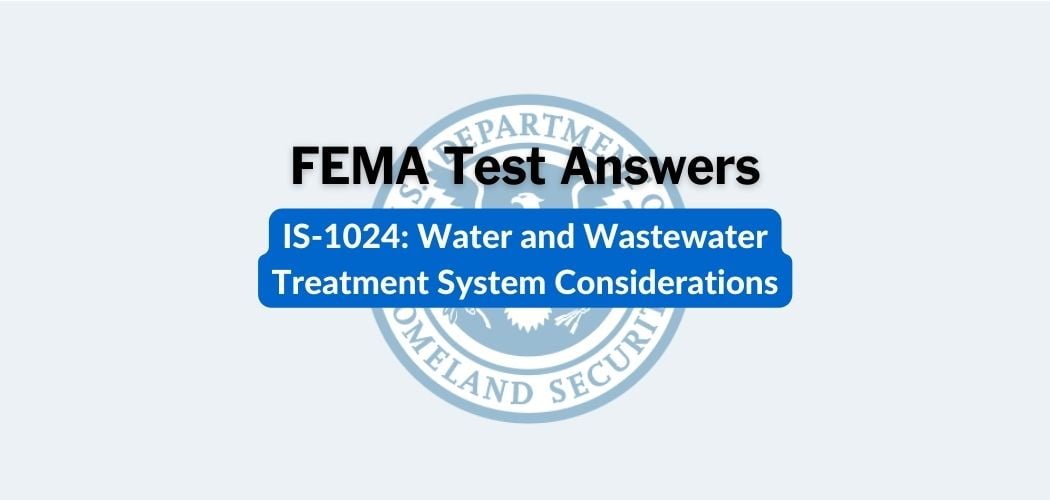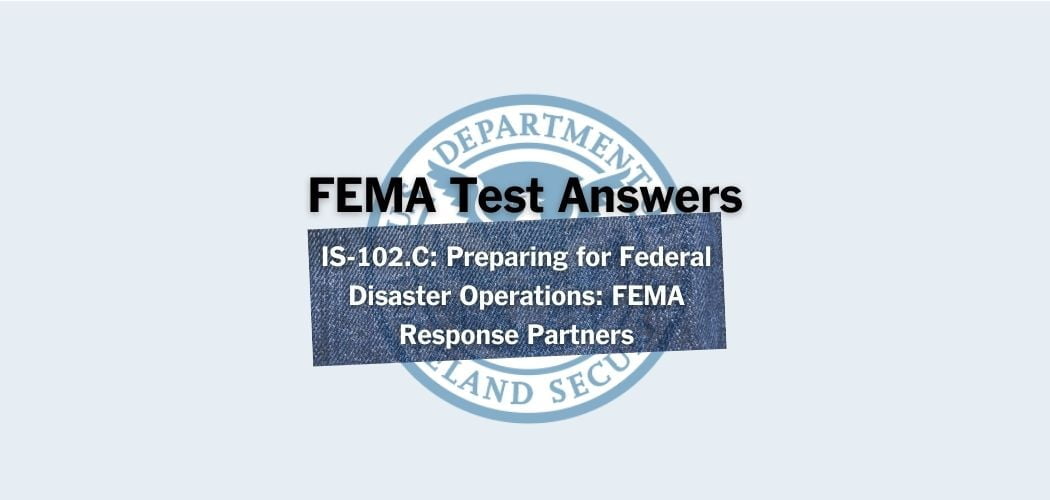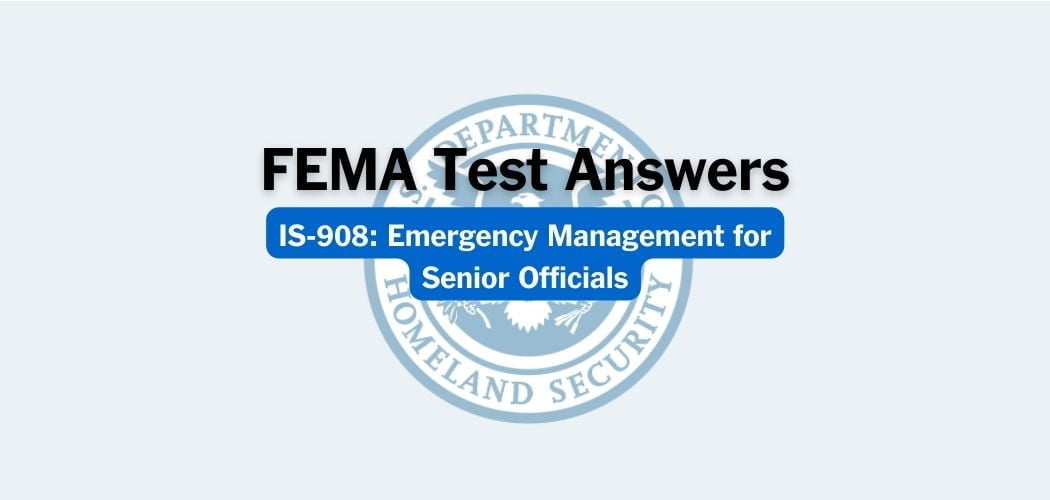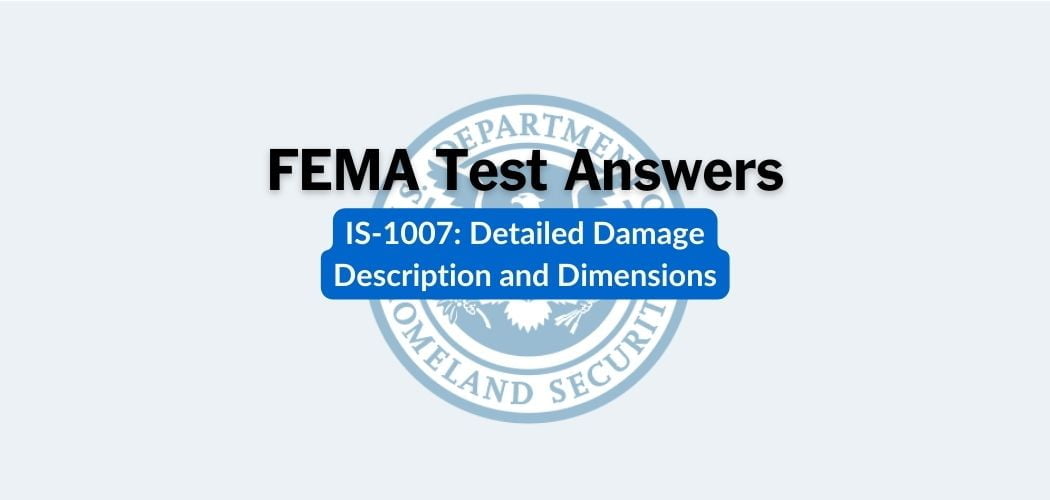Overview: The FEMA IS-216 course was published on 8/22/2016 to help Federal Disaster Recovery Coordinators (FDRC) and Federal Coordinating Officers (FCO) understand how to implement the Unified Federal Review (UFR) Process and the key roles that they play in the UFR Process.
Primary audience: The IS-216 course is for all FEMA EHP staff.
FEMA IS-216 test answers
Each time this test is loaded, you will receive a unique set of questions and answers. The test questions are scrambled to protect the integrity of the exam.
Question 1. Disaster recovery leadership should engage with field staff to facilitate and promote the UFR Process.
A. TRUE✅
B. FALSE
Question 2. The UFR Memorandum of Understanding establishes:
A. Roles of federal agencies to the UFR Process
B. Responsibilities of federal agencies to the UFR Process
C. Commitments of federal agencies to the UFR Process
D. All of the above✅
Question 3. The UFR Tools and Mechanisms
A. Are scalable to the needs of a particular disaster✅
B. Enable EHP Practitioners to share data
C. Expedite compliance with EHP requirements
D. All of the above
Question 4. The UFR Advisor is a field position whose main responsibility is interagency coordination across federal agencies.
A. TRUE✅
B. FALSE
Question 5. Which is a question that should be asked of parties to the UFR MOU?
A. Will they be providing joint funding for disaster recovery projects?
B. Are federal lands impacted?
C. Will they be required to conduct their own EHP reviews?
D. All of the above✅
Question 6. The UFR Memorandum of Understanding does not include:
A. Changes to EHP requirements✅
B. Definitions for terms used in conjunction with the UFR Process to provide a common understanding
C. Authorities of the agencies involved to enter into the UFR Process
D. Issue elevation procedures
Question 7. The UFR Advisor does not:
A. Identify opportunities for EHP efficiencies
B. Serve as the interagency coordinator for EHP compliance for disaster recovery projects
C. Complete EHP reviews✅
D. Update and seek guidance from the FEMA Regional Environmental Officer (REO)
Question 8. Which of the following could be used during disaster recovery to enhance EHP review?
A. FEMA’s Prototype Programmatic Agreement
B. Endangered Species Act Matrix
C. Applicant Guide
D. All of the above✅
Question 9. The UFR process can assist in:
A. Eliminating requirements for consultations between agencies and between agencies and applicants.
B. Leveraging existing and developing new interagency agreements, such as Memorandums of Understanding and programmatic agreements✅
C. Circumventing or superseding existing federal, tribal, state or local EHP requirements.
D. Establishing a single review process for agencies funding a single project.
Question 10. Which of the following could be completed prior to a disaster?
A. A Disaster-Specific MOU
B. The Template Checklist for FEMA/HUD
C. Programmatic Environmental Assessments✅
D. None of the above
Question 11. EHP Practitioners should review the Interagency Meeting Checklist to ______ for disaster recovery:
A. Establish mechanisms to share information with agencies✅
B. Engage in internal planning
C. Both A and B
D. None of the above
Question 12. The UFR Advisor will engage with:
A. National UFR Coordinator
B. FEMA REOs
C. EHP Advisor
D. All of the above✅
Question 13. Based on the disaster scenario timeline, which of the following is not an aspect of Recovery Planning?
A. Interagency forms and data collection used to simplify reviews
B. Disaster-Specific MOUs adopted
C. Impacts analysis is conducted✅
D. Practitioner Guidance helps with efficient and informed impacts analysis and better decisions
Question 14. Disaster recovery leadership should ask the UFR Advisor what environmental and cultural sensitivities exist and have been impacted by the disaster to facilitate disaster recovery in the impacted state or tribal area.
A. TRUE✅
B. FALSE
Question 15. The UFR Process uses existing environmental and historic preservation (EHP) requirements and best practices, through Tools and Mechanisms, to:
A. Slow down disaster recovery projects.
B. Change the EHP review process for disaster recovery projects✅
C. Change the EHP requirements for disaster recovery projects
D. Make EHP review harder to complete
Question 16. The FEMA EHP Advisor implements the Tools and Mechanisms if the UFR Advisor is not activated.
A. TRUE✅
B. FALSE



